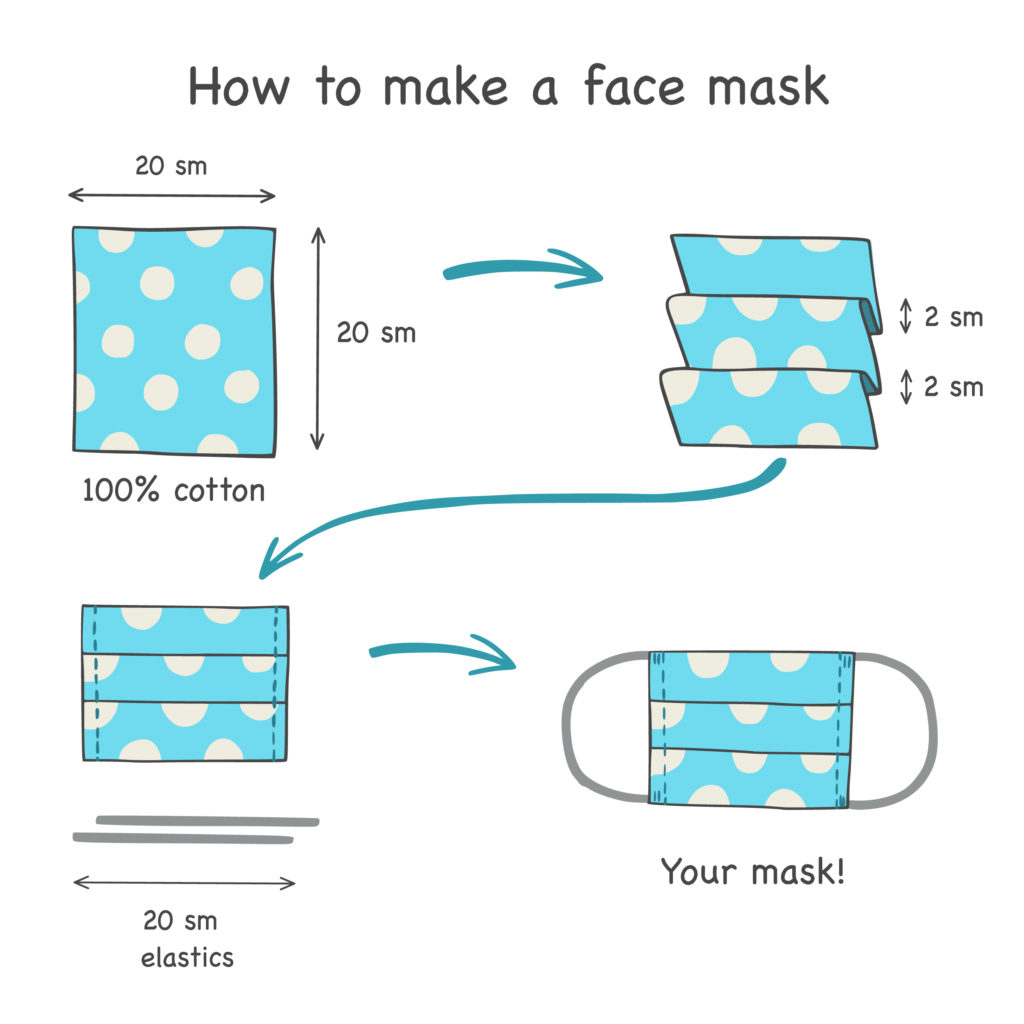No Mask? How to Make Your Own Protective Face Mask
The Centers for Disease Control and Prevention (CDC) now recommends that everyone wear a face cloth covering in public.
There’s already a shortage of face masks during this coronavirus pandemic. Now with this new recommendation, even more people are going to improvise. They can cover the bottom half of their face with a scarf or bandana—or make their own protective face masks.
By covering your face, you’re protecting yourself from being exposed to the coronavirus. You still need to wash hands regularly and/or sanitize them, however. And you have to religiously sanitize frequently-used handles and areas in your home, as well as any mail or packages that come into your home, including groceries.
But by wearing a mask, you’re also protecting others in case you have the virus but are asymptomatic. It takes two weeks after exposure to see symptoms.
In those two weeks, you have no symptoms and can spread the virus to others through microscopic particulate released from your nose and mouth. This particulate can easily be spread when you talk, breathe heavily (if you’re exercising), sneeze, or cough.
There are not enough masks available for everyone who needs them — including the many healthcare workers on the frontlines of this coronavirus pandemic. That’s why many people are taking matters into their own hands making their own protective face masks. No masks? Here’s how to make your own protective face mask.
How to Make Your Own Protective Face Mask
The best fabrics to make your own protective face masks from include clean unused vacuum cleaner bags, 600-count pillowcases (this fabric is a tighter weave, offering more protection), and stacked coffee filters, according to this helpful piece in The New York Times. Scarves and bandana material have the lowest protective scores but are still better than not wearing a mask at all. Old tee shirts, cut up, as well as lower-thread count pillow cases and sheets can also work.
The key: you want to use a fabric where light doesn’t pass through. Or, if light does pass through, sew together several layers of the fabric to offer enough protection, while still allowing you to breathe.
What do you do when you have your home “fabric” picked out? There are many how-to’s out there, including this one on the CDC website, which offers options for sewn and no-sew masks.
This guide, below, is also helpful:

Keep in mind that if you have a regular mask, you can safely reuse it. And if you have your own homemade protective face mask, it needs to be cleaned regularly.
Sewing Surgical Masks
Since there’s such a great need of masks for healthcare workers, some people are not only making masks for themselves, they’re also taking part in the 100 Million Mask Challenge. They’re sewing extra masks and donating them to hospitals and/or health care systems.
If you’re interested in donating masks, take a look at the link above first as there are some design specifications that you have to follow. These guidelines ensure that whatever masks are made offer healthcare workers the most protection since they are on the frontlines of the coronavirus.
Whatever you do, take this coronavirus very seriously: cover your face when in public, keep a safe distance away from others (and avoid any crowded areas), and wash your hands thoroughly with soap and water for at least 20 seconds. Stay safe!
Back to blog